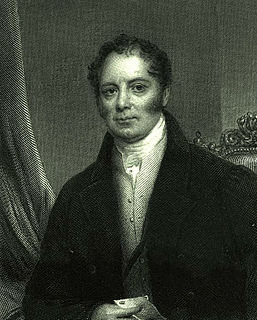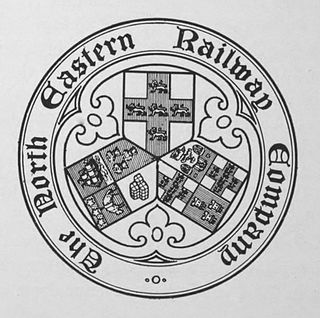Related Research Articles

Yorkshire, formally known as the County of York, is a historic county of Northern England and the largest in the United Kingdom. Because of its great size in comparison to other English counties, functions have been undertaken over time by its subdivisions, which have also been subject to periodic reform. Throughout these changes, Yorkshire has continued to be recognised as a geographic territory and cultural region. The name is familiar and well understood across the United Kingdom and is in common use in the media and the military, and also features in the titles of current areas of civil administration such as North Yorkshire, South Yorkshire, West Yorkshire and the East Riding of Yorkshire.

Yorkshire and the Humber is one of nine official regions of England at the first level of Nomenclature of Territorial Units for Statistics (NUTS) for statistical purposes. It comprises most of Yorkshire, as well as North Lincolnshire and North East Lincolnshire. Middlesbrough, Redcar and Cleveland or other areas of the historic county of Yorkshire, are not included. The largest settlements are Leeds, Sheffield, Bradford, Hull, and York. The population in 2011 was 5,284,000.

Edward Baines (1774–1848) was the editor and proprietor of the Leeds Mercury,, politician, and author of historical and geographic works of reference. On his death in 1848, the Leeds Intelligencer described his as "one who has earned for himself an indisputable title to be numbered among the notable men of Leeds"

The North Eastern Railway (NER) was an English railway company. It was incorporated in 1854 by the combination of several existing railway companies. Later, it was amalgamated with other railways to form the London and North Eastern Railway at the Grouping in 1923. Its main line survives to the present day as part of the East Coast Main Line between London and Edinburgh.
This is a list of people who have served as Lord Lieutenant for the East Riding of Yorkshire. The office was established after the English Restoration in 1660, when a Lord Lieutenant was appointed for each Riding of Yorkshire. Since 1721, all Lord Lieutenants have also been Custos Rotulorum of the East Riding of Yorkshire, and for part of the period also Lieutenants of the Town and County of the Town of Kingston upon Hull. It was abolished on 31 March 1974 with the creation of the county of Humberside, but was re-created upon the abolition of Humberside on 1 April 1996.

Bolton is a small village and former civil parish, now in the parish of Hedgeley, in the county of Northumberland, England. It is situated on the north side of the River Aln, about two miles (3 km) east by north from Whittingham, and 5 1⁄2 miles west from Alnwick. It has a chapel and a small number of residential properties.

Holme-on-Spalding-Moor is a large village and civil parish in the East Riding of Yorkshire, England. It is situated approximately 8 miles (13 km) north-east of Howden and 5 miles (8 km) south-west of Market Weighton. It lies on the A163 road where it joins the A614 road.

Hotham is a small village and civil parish in the East Riding of Yorkshire, England. It is situated approximately 16 miles (26 km) west of Hull, 21 miles (34 km) south east of York and 4 miles (6 km) south of Market Weighton town centre. The village has road links with the cities of Kingston upon Hull, York and Leeds. The eastern end of the M62 motorway, at Junction 38, is 2 miles (3 km) south-west from Hotham.

Loidis, from which Leeds derives its name, was anciently a forested area of the Celtic kingdom of Elmet. The settlement certainly existed at the time of the Norman conquest of England and in 1086 was a thriving manor under the overlordship of Ilbert de Lacy. It gained its first charter from Maurice de Gant in 1207 yet only grew slowly throughout the medieval and Tudor periods. The town had become part of the Duchy of Lancaster and reverted to the crown in the medieval period, so was a Royalist stronghold at the start of the English Civil War.
The newspapers of Yorkshire have a long history, stretching back to the 18th century. Regional newspapers have enjoyed varying fortunes, reflected in the large number of now-defunct papers from Yorkshire.
Newcastle-upon-Tyne was a borough constituency in the county of Northumberland of the House of Commons of England to 1706 then of the House of Commons of Great Britain from 1707 to 1800 and of the House of Commons of the United Kingdom from 1801 to 1918. It returned two Members of Parliament (MPs), elected by the bloc vote system.

Pigot's Directory was a major British directory started in 1814 by James Pigot.

Chirton Hall or Chirton House, occasionally spelled Churton and originally Cheuton, was a country house in Chirton, in what is now a western suburb of North Shields, Tyne and Wear, North East England. Historically, the house was in the county of Northumberland.
The Durham Dean and Chapter Library is located in Durham Cathedral, Durham, England. Founded in 995 AD, it is one of the largest English cathedral libraries. William de St-Calais donated 46 books. In the 19th century it was located in the Old Frater House, or Monk's Hall, on the south side of the cathedral's cloisters, situated there in 1680 by the Dean of Durham John Sudbury, who fitted up the building.
The following is a timeline of the history of the city of Liverpool, England.
The following is a timeline of the history of the city of Hull, England.
The following is a timeline of the history of the city of Bradford, West Yorkshire, England.
The following is a timeline of the history of the city of Derby, England.
Thomas Hanway Bigge was an English banker in Newcastle upon Tyne. The Bigge family were gentry based at Longbenton in the later 18th century, and are well documented; but Thomas Hanway Bigge has been confused with another member of the family, Thomas Bigge (1766–1851), who had moved to the London area by about 1810.
The palatine courts of Durham were a set of courts that exercised jurisdiction within the County Palatine of Durham. The bishop purchased the wapentake of Sadberge in 1189, and Sadberge's initially separate institutions were eventually merged with those of the County Palatine.
References
- ↑ White, William (1882), "White's Directories (advert)", White's general and commercial directory of Hull,
Established 1822
- ↑ Pigot and Co.'s National Commercial Directory for the Whole of Scotland and of the Isle of Man, ... Manchester, Liverpool, Leeds, Hull, Birmingham, Sheffield, Carlisle, and Newcastle-upon-Tyne, London: J. Pigot & Co., 1837
- ↑ M. T. Wild and G. Shaw (1974). "Locational Behaviour of Urban Retailing during the Nineteenth Century: The Example of Kingston upon Hull". Transactions of the Institute of British Geographers (61): 101–118. doi:10.2307/621602. JSTOR 621602.
- Post office directory of Sheffield. Kelley and Co. 1854.
- John Parker Anderson (1881), "Yorkshire: Sheffield", Book of British Topography: a Classified Catalogue of the Topographical Works in the Library of the British Museum Relating to Great Britain and Ireland, London: W. Satchell